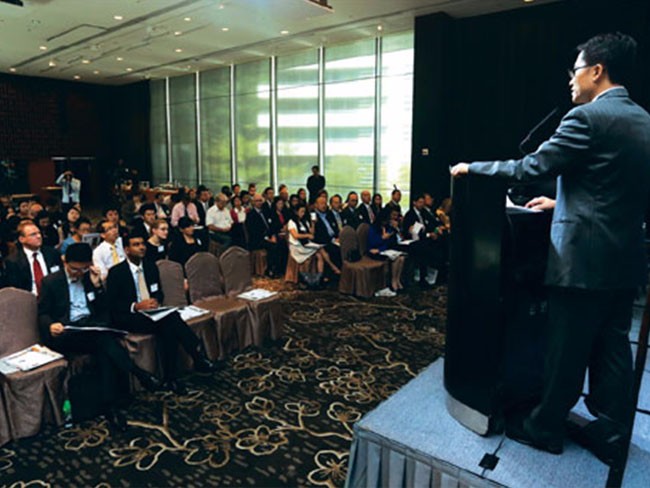2014-09-25

As the Association of Southeast Asian Nations (ASEAN) is becoming a large community without boundaries, the cost of infrastructure projects will be lower, said Cledan Mandri-Perrott, lead finance officer and public-private partnership (PPP) specialist, Singapore Infrastructure Hub with the World Bank Group. “(While) we wouldn’t have a perfect price at the beginning, but, we will have a benchmark in other countries for reference,” said Mandri-Perrott. “If you look at OECD (Organisation for Economic Cooperation and Development) countries, there has been a decrease in cost. When the risks are fully understood, the premium will gradually decrease accordingly. So does the cost,” he told China Daily. Based in Singapore, Mandri-Perrott has been involved over the past 20 years in infrastructure projects and has experience in developing and implementing project finance transactions particularly. He recommended greater use of the PPP — arrangements of services and responsibilities shared by both the public and private sectors — for infrastructure projects in the ASEAN region, as the region aims to achieve a sustainable economic development. “The question is what should be the ratio between public money and private money, and how to achieve the balance of relevant risks between these two sectors and benefit the community at the same time.” The forthcoming ASEAN Economic Community by the end of 2015 will remove trade barriers among its 600 million population region. ASEAN infrastructure investment grew by 8.5 percent over the previous year to $19.4 billion and comprised 12.9 percent of global investment. The whole region implemented 85 new projects, data from the World Bank show. He said there are massive opportunities, as there are many trans-boundary infrastructure projects, including those in energy and railway sectors. “What I am worried about projects in ASEAN is that people are talking about very big projects, while actually small projects, which will improve efficiency, such as sewage or waste water treatment, should be done in a much systemic way,” he commented. There are many other challenges, such as lack of quality in project preparation, week contractual environment and currency devaluation. He suggested local government should manage those projects by better prioritization, profitability and feasibility, and encourage the participation of small companies. Data from the World Bank show that China led the way in 2013 (60 projects), followed by Brazil (51) and India (31). Mandri-Perrott also named many fields that require further investment in the coming years for China, such as telecom and urban transportation, which will directly impact people daily life. Geert Peeters, group director and chief financial officer with CLP Holdings Ltd, said that there are three perspectives to balance when conducting infrastructure projects, namely, caring for the environment, reliable and safe supply, and reasonable tariff. “There are (also) opportunities for China’s utility sectors, due to its highly efficiency thermal generation, large scale renewable energy in wind and solar, and ambitious nuclear expansion plan,” said Peeters. Mandri-Perrott added that the biggest issue with China’s infrastructure is that PPP has not been properly used as a tool. “We are seeing that the local government is showing more interest in using PPP for project financing, instead of relying on normal commercial banking.” He suggested local governments should diversify their sources by using financing from the local capital market and institutional investors. linjingcd@chinadaily.com.cn http://www.chinadailyasia.com/2014-09/25/content_15170771.html